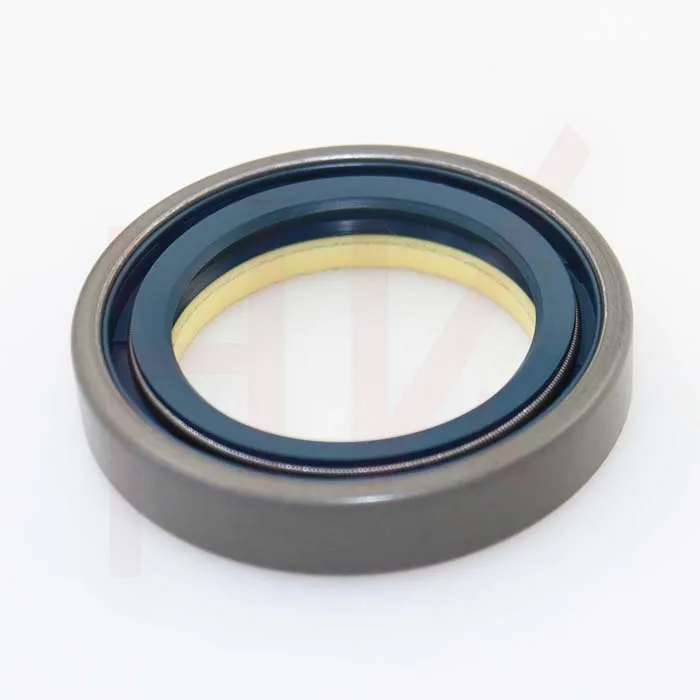ጥቅም . 06, 2024 13:43 Back to list
hydraulic dust seal
Understanding Hydraulic Dust Seals Importance and Applications
Hydraulic systems are integral to the functioning of modern machinery across various industries, from construction to manufacturing. One crucial component that ensures the efficiency and longevity of these systems is the hydraulic dust seal. This article delves into the importance of hydraulic dust seals, their applications, and the factors to consider when selecting the right seal for your hydraulic system.
What is a Hydraulic Dust Seal?
A hydraulic dust seal is a barrier designed to prevent dust, dirt, and other contaminants from entering hydraulic systems. These seals typically fit around hydraulic cylinders, preventing external debris from coming into contact with hydraulic fluid and internal components. Their primary function is to maintain the cleanliness of the hydraulic environment, which is essential for the smooth operation of machinery.
Importance of Hydraulic Dust Seals
1. Protection Against Contaminants One of the primary reasons for using hydraulic dust seals is their effectiveness in keeping contaminants at bay. Dust, dirt, and other environmental pollutants can degrade the performance of hydraulic systems. When these particles enter the hydraulic fluid, they can lead to corrosion and increased wear on internal components, resulting in costly repairs and downtime.
2. Improved System Longevity By preventing contamination, hydraulic dust seals play a significant role in extending the life of hydraulic components. Machinery that works in harsh conditions, such as construction sites or agricultural environments, is particularly susceptible to contamination. The use of robust dust seals can significantly reduce maintenance intervals and extend the lifespan of hydraulic systems.
3. Enhanced Performance A clean hydraulic system operates more efficiently. Contaminants can cause blockages and increase friction within the system, leading to decreased performance and increased energy consumption. Hydraulic dust seals ensure that the system operates smoothly, which can result in better energy efficiency and overall productivity.
4. Cost Savings While hydraulic dust seals may represent a small component within the larger hydraulic system, their impact on performance and longevity can lead to substantial cost savings. By reducing the risk of contamination, businesses can avoid the high costs associated with repairs, replacements, and unplanned downtime.
Applications of Hydraulic Dust Seals
Hydraulic dust seals are extensively used in various applications, including
hydraulic dust seal

- Construction Equipment Excavators, bulldozers, and loaders often operate in environments laden with dust and debris. Hydraulic dust seals are essential for ensuring the reliability of these machines. - Agricultural Machinery Tractors and harvesters work in soil and other challenging conditions. Hydraulic dust seals protect against dirt and moisture, ensuring the machinery operates efficiently throughout the farming season. - Industrial Machinery Hydraulic systems are common in manufacturing processes. Dust seals help maintain the integrity of hydraulic systems in assembly lines, presses, and other heavy machinery.
- Automotive Applications Many vehicles use hydraulic systems (e.g., braking systems and power steering). Dust seals help protect these components from the elements, ensuring their proper function.
Choosing the Right Hydraulic Dust Seal
When selecting a hydraulic dust seal, several factors should be considered
1. Material Compatibility Different materials are used for hydraulic seals, including elastomers, polyurethane, and PTFE. The choice of material should be compatible with the hydraulic fluid used and the operating temperature range.
2. Size and Fit Ensuring the correct size and fit of the seal is critical. An improper fit can lead to contamination ingress and system failure.
3. Operating Environment Consider the specific operating conditions, such as exposure to extreme temperatures, pressure levels, and potential chemical exposure.
4. Type of Seal Various types of dust seals are available, including single and double-lip seals. The choice between these depends on the application and required level of protection.
Conclusion
Hydraulic dust seals are vital components in ensuring the efficiency and reliability of hydraulic systems. By preventing contaminants from entering these systems, they contribute to enhanced performance, longevity, and cost-effectiveness. Selecting the right dust seal involves understanding material compatibility, size, operating conditions, and seal type. In a world where machinery faces increasing operational demands, investing in quality hydraulic dust seals is more critical than ever for maintaining peak performance and minimizing downtime.
-
TCN Oil Seal Metal Ring Reinforcement for Heavy Machinery
NewsJul.25,2025
-
Rotary Lip Seal Spring-Loaded Design for High-Speed Applications
NewsJul.25,2025
-
Hydraulic Cylinder Seals Polyurethane Material for High-Impact Jobs
NewsJul.25,2025
-
High Pressure Oil Seal Polyurethane Coating Wear Resistance
NewsJul.25,2025
-
Dust Proof Seal Double Lip Design for Construction Equipment
NewsJul.25,2025
-
Hub Seal Polyurethane Wear Resistance in Agricultural Vehicles
NewsJul.25,2025
-
The Trans-formative Journey of Wheel Hub Oil Seals
NewsJun.06,2025
Products categories
















